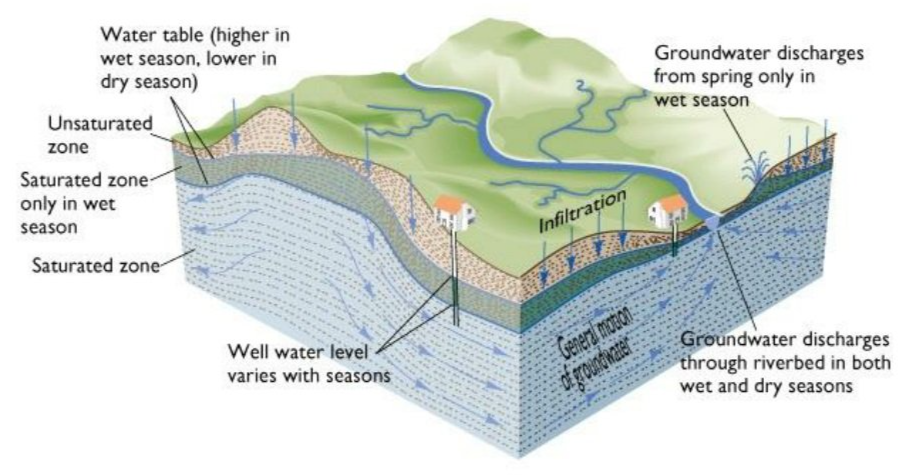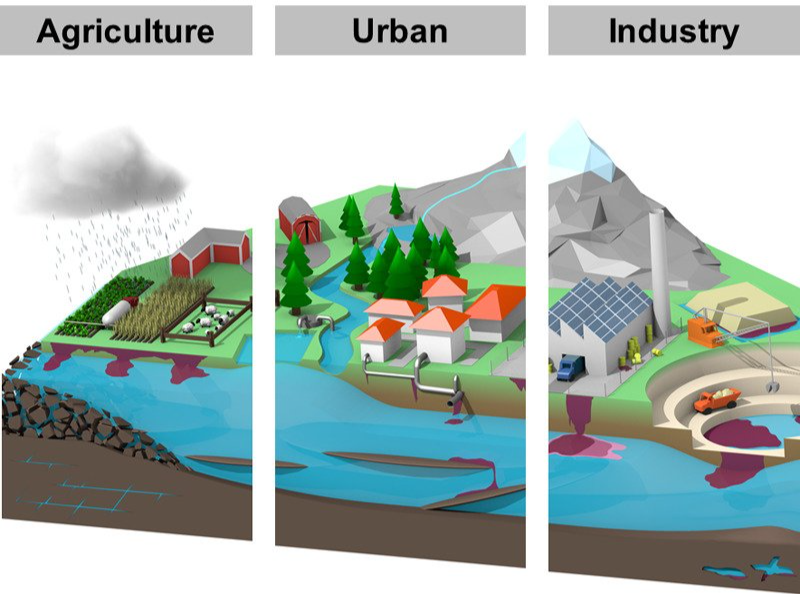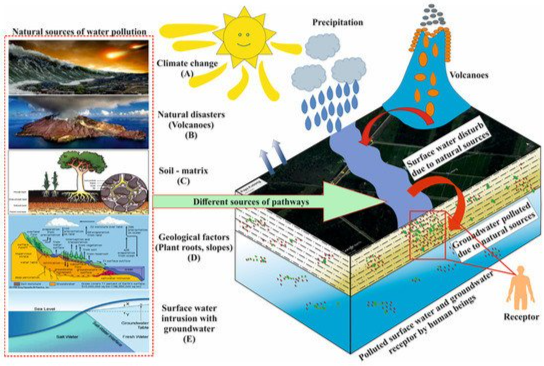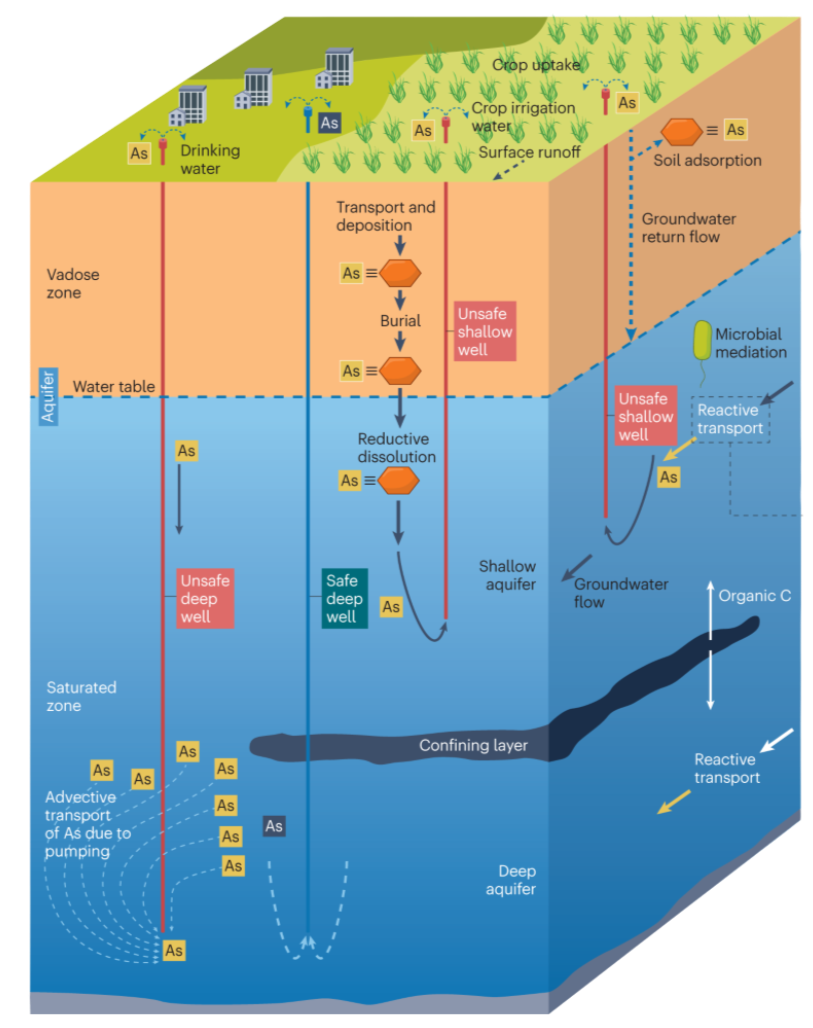GROUNDWATER AND WELL CONTAMINATION
In a groundwater system, water flows naturally according to the hydraulic pressure put on the system.
Groundwater Flow
Groundwater flow is influenced by the type of aquifer and its physical conditions. At any one location, water levels in different aquifers can vary significantly due to the presence of confining layers. These variations affect how wells behave and how groundwater moves, with important implications for water availability and contamination risks.
Confining layers also known as aquitards, are impermeable or semi-permeable rock layers that surround and restrict the movement of water or other fluids within an aquifer or reservoir.
Understanding Pressure and Piezometric Levels
In a groundwater system, water flows naturally according to the hydraulic pressure put on the system.
At the deep well labeled “artesian well,” the pressure on the system forces water up into the well to nearly the same elevation as at the recharge area (the dashed line).
When the water level in a well rises above the top of the aquifer, it is under artesian conditions. If it rises so high that it overtops a well, it is called a flowing artesian well (labeled).
The piezometric level represents the height to which water will rise in a well due to pressure in a confined aquifer.
Seasonal Effects and Flow Reversal
Groundwater flow isn’t static - it can change with the seasons and weather conditions.
During winter, frozen ground reduces recharge, lowering water levels.
After heavy rains, surface water like streams can rise above groundwater levels, temporarily reversing flow directions.
Pumping Effects on Groundwater Flow
Groundwater Flow & Contamination
How Contaminants Enter the Groundwater System?
Types and Sources of Groundwater Contaminants
Contaminants can be naturally occurring (e.g., iron, sediment) or anthropogenic (human-made, like chemicals or waste). Both types fall into two main categories:
Nuisance Contaminants - affect taste, smell, appearance, or damage equipment (e.g., staining from iron, wear from sediment).
Health-risk contaminants – pose direct threats to human health.
Anthropogenic Contaminants
Contaminants caused by human activities are called anthropogenic contaminants. These often enter the groundwater system through surface infiltration, which depends on the permeability of the soil and shallow earth materials above the aquifer.
Improper waste disposal, such as dumping chemicals or trash directly on the ground, can slowly but inevitably lead to groundwater contamination. Over time, these substances infiltrate the soil and reach the aquifer.
Naturally Occuring Contaminants
Naturally occurring contaminants are present in the earth and may become part of the groundwater system simply due to geology. Unlike anthropogenic ones, these cannot always be prevented.
Some naturally occurring substances are merely nuisance contaminants—such as iron, sulfur, manganese, hardness, and chloride—affecting taste or causing stains.
Others pose health risks, including:
Arsenic
Barium
Chromium
Nitrate
Selenium
Radium
Uranium









